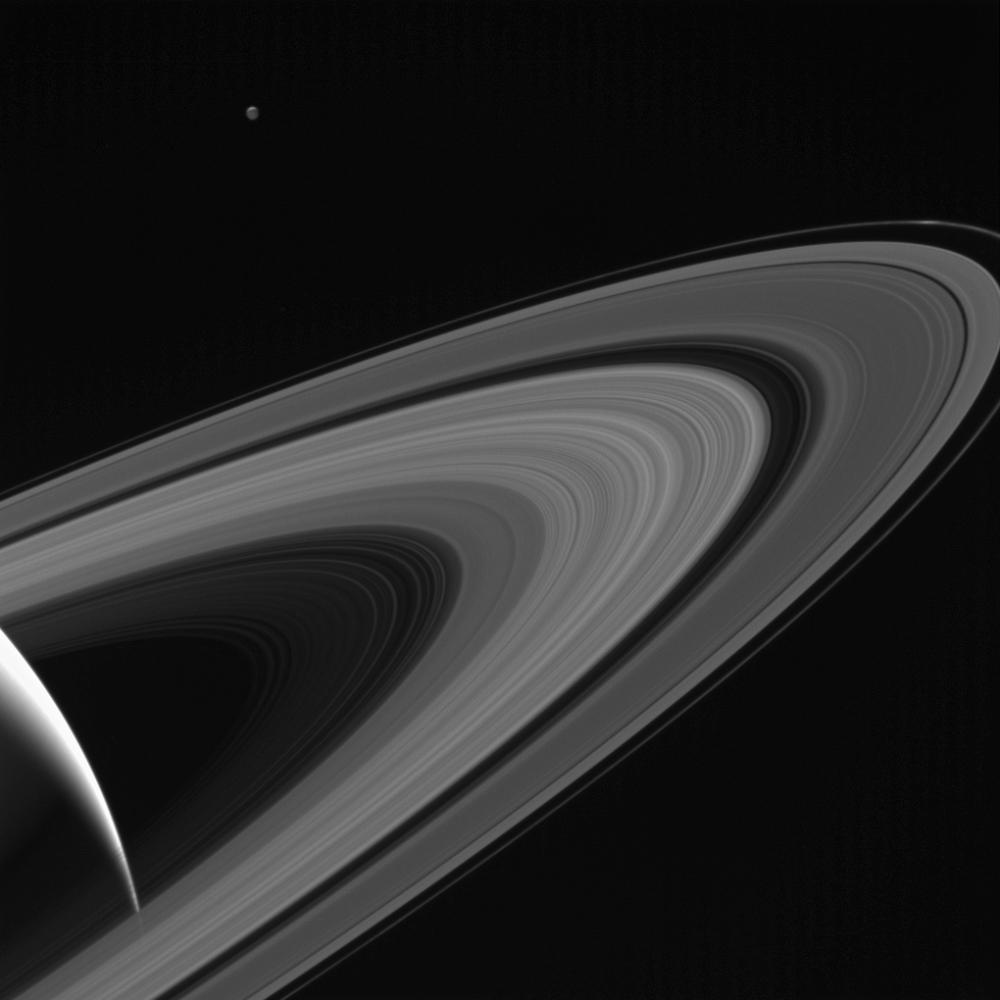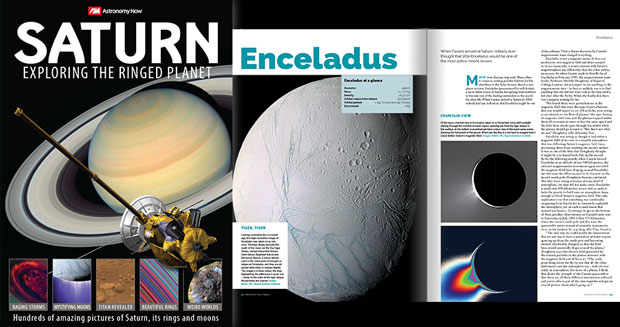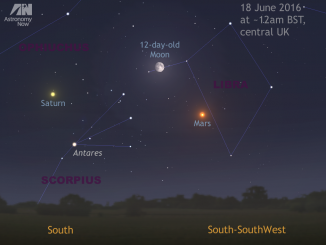NASA’s Cassini probe gazes across the icy rings of Saturn toward the icy moon Tethys, whose night side is illuminated by Saturnshine, or sunlight reflected by the planet.

Tethys was on the far side of Saturn with respect to Cassini here; an observer looking upward from the moon’s surface toward Cassini would see Saturn’s illuminated disc filling the sky.
Tethys was brightened by a factor of two in this image to increase its visibility. A sliver of the moon’s sunlit northern hemisphere is seen at top. A bright wedge of Saturn’s sunlit side is seen at lower left.
This view looks toward the sunlit side of the rings from about 10 degrees above the ring plane. The image was taken in visible light with the Cassini spacecraft wide-angle camera on 13 May 2017.
The view was acquired at a distance of approximately 1.2 million kilometres (750,000 miles) from Saturn and at a Sun-Saturn-spacecraft, or phase, angle of 140 degrees. Image scale is 70 kilometres (43 miles) per pixel on Saturn. The distance to Tethys was about 1.5 million kilometres (930,000 miles). The image scale on Tethys is about 90 kilometres (56 miles) per pixel.
Saturn: Exploring the Ringed Planet
Find out more about Saturn and its moons in this 196-page special edition from Astronomy Now. [geot exclude_region=”US” ]Order from our online store.[/geot][geot region=”US” ]Order from our online store.[/geot]




